Table of Contents
Introduction
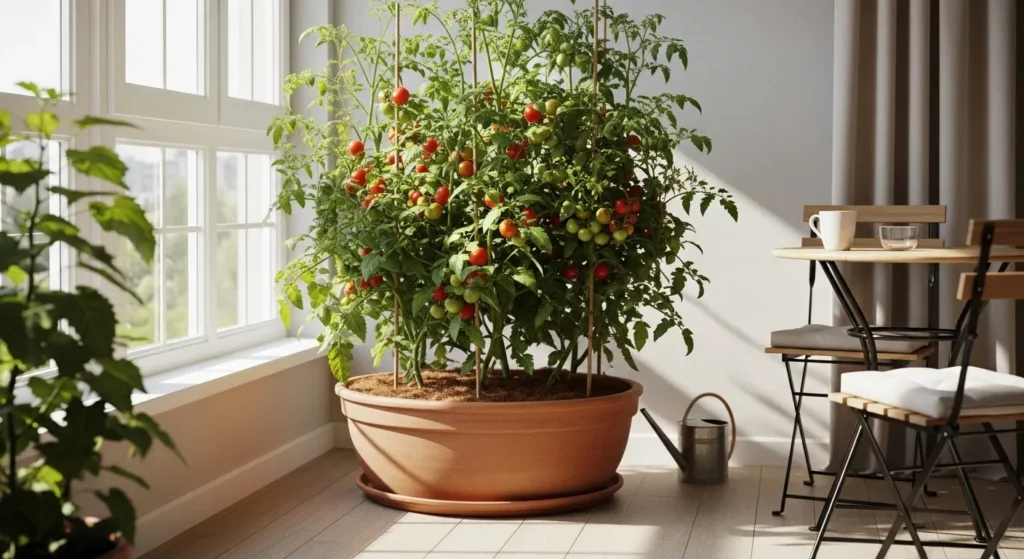
If you’ve ever dreamed of plucking fresh, juicy tomatoes straight from a vine in your kitchen or balcony, you’re not alone. In 2025, soil-free gardening is booming—from hydroponic farms on city rooftops to compact DIY kits in apartments. More people are asking: “Can I really grow tomatoes without soil?” The answer is yes—and it’s easier than you think.
In this guide, I’ll walk you through the step-by-step process of growing tomatoes in pots without soil. Whether you live in a tiny apartment, have limited outdoor space, or want to try a new sustainable method, this article will give you everything you need to succeed.
By the end, you’ll know exactly how to start your first soil-free tomato garden, avoid beginner mistakes, and enjoy your own sweet, homegrown tomatoes—even if you don’t have a backyard.
Why Grow Tomatoes Without Soil?
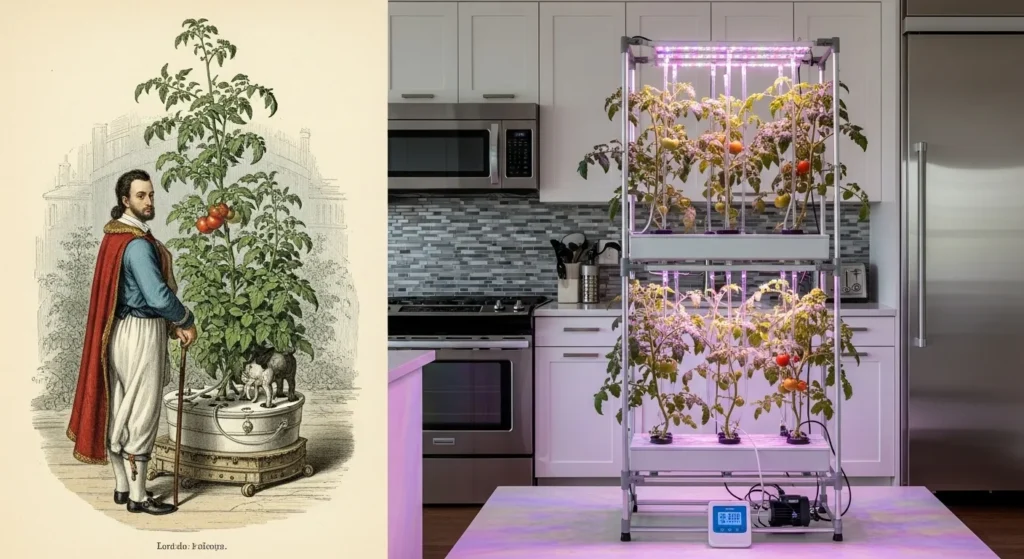
Before we jump into the “how,” let’s talk about the “why.”
Growing without soil isn’t a new idea. In fact, hydroponics—the science of growing plants in water enriched with nutrients—has been around for centuries. The Hanging Gardens of Babylon are believed to be one of the earliest examples. Fast forward to the 20th century, and hydroponics was used to grow fresh food for astronauts in space.
But in recent years, soil-free gardening has shifted from laboratories and commercial farms to our homes. Urban gardeners, apartment residents, and eco-conscious families are embracing it for one big reason: convenience. No mess, fewer pests, faster growth, and fresh vegetables right where you live.
For tomatoes—the crown jewel of home gardening—this method is especially rewarding. Instead of battling soil-borne diseases or worrying about poor backyard conditions, you can grow thriving plants in pots filled with coco coir, perlite, or nutrient-rich water solutions.
Current Trends in Soil-Free Tomato Gardening
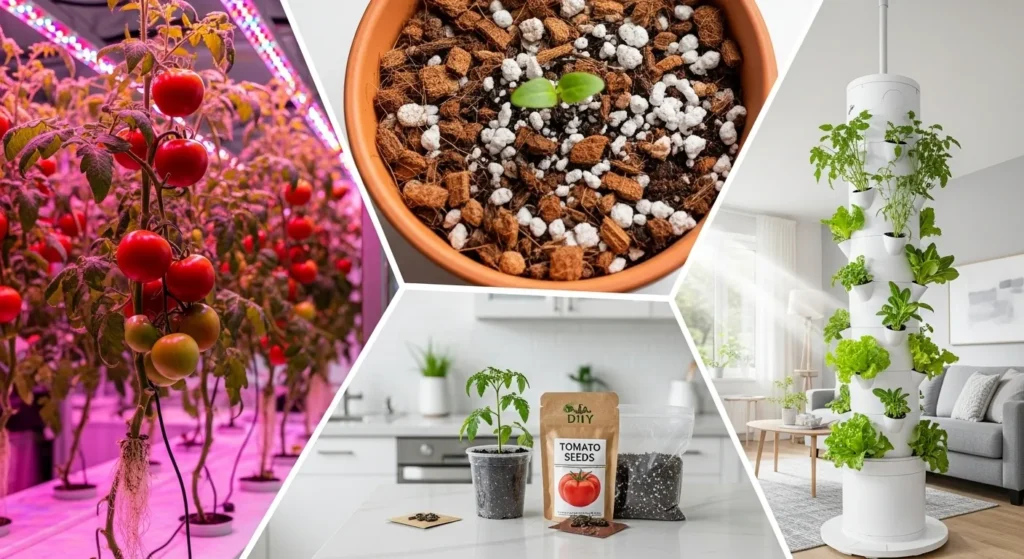
Hydroponics & Aquaponics at Home
Affordable hydroponic kits allow anyone to grow tomatoes on a kitchen counter. Aquaponics—where fish waste provides nutrients for plants—is also gaining popularity among hobbyists.
Coco Coir & Perlite Mixes
Coco coir (made from coconut husks) has become the go-to alternative to soil. It holds water well, is eco-friendly, and pairs perfectly with perlite or vermiculite for aeration.
Compact Container Systems
Companies are designing vertical towers and modular hydroponic systems for small apartments. You don’t need a garden—just a sunny window or grow light.
DIY Tomato Kits
From Amazon to local gardening shops, DIY soil-free tomato kits are selling fast. They include pots, growing medium, seeds, and nutrient packs—perfect for beginners.
Benefits of Growing Tomatoes Without Soil
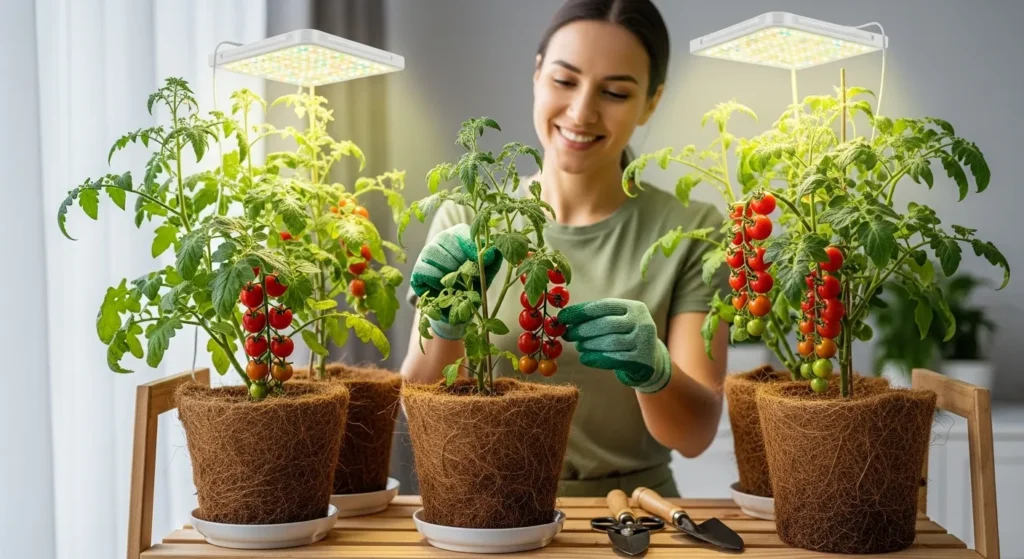
- Healthier Plants – Soil often carries pests, fungi, and diseases. By going soil-free, your tomatoes are less likely to get sick.
- Faster Growth & Higher Yields – In hydroponics, plants get nutrients directly, making them grow faster and produce more fruit.
- Space-Saving – Ideal for city living, you can grow tomatoes on balconies, patios, or even indoors.
- Eco-Friendly Water Use – Hydroponic systems use up to 90% less water than traditional gardening.
- Year-Round Harvests – With grow lights, you can harvest fresh tomatoes even in the middle of winter.
Challenges Beginners Face (and Solutions)
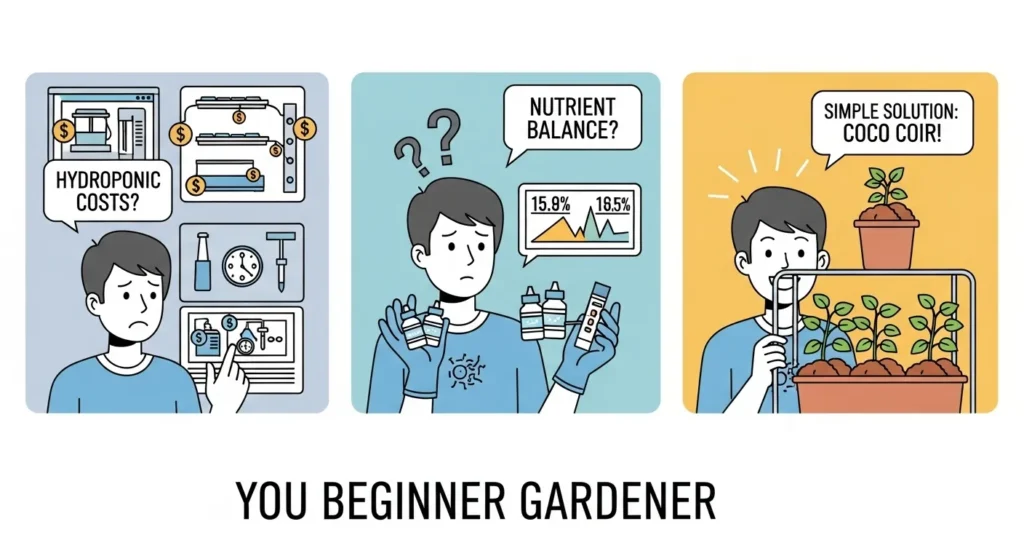
Cost of Equipment
- Challenge: Hydroponic systems or LED grow lights can seem expensive.
- Solution: Start small. A pot, coco coir, and a simple nutrient solution are enough. Upgrade later as your confidence grows.
Nutrient Balance
- Challenge: Unlike soil, your growing medium doesn’t provide natural nutrients.
- Solution: Use ready-made hydroponic tomato nutrient solutions. They come pre-balanced with the exact mix of nitrogen, phosphorus, and potassium.
👉 For an in-depth resource, check the University of Arizona Cooperative Extension – Hydroponic Tomato Guide.
Lack of Knowledge
- Challenge: Beginners often feel overwhelmed with new terms like “EC,” “pH,” or “nutrient film technique.”
- Solution: Keep it simple. Start with a pot and a coco coir setup. As you gain confidence, experiment with more advanced systems.
Step-by-Step Guide: How to Grow Tomatoes in Pots Without Soil
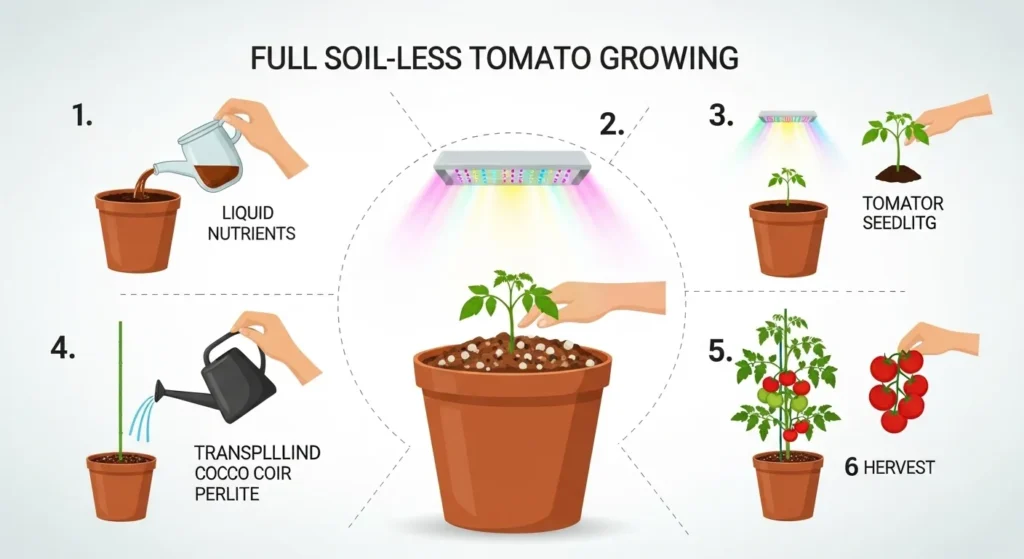
1. Choosing the Right Pot
- Use a pot that’s at least 5 gallons (19 liters). Tomatoes need room for their roots.
- Plastic or fabric grow bags work well. Ensure it has good drainage holes.
Pro Tip: Dark-colored pots help keep roots warm, while fabric grow bags allow better aeration.
2. Best Growing Mediums (Coco Coir, Perlite, Vermiculite)
- Coco Coir – Holds water well and is eco-friendly.
- Perlite – Improves drainage and prevents root rot.
- Vermiculite – Retains moisture and nutrients.
A good mix: 70% coco coir + 30% perlite.
3. Preparing the Pot & Drainage
- Place a layer of small pebbles or clay pellets at the bottom.
- Fill with your coco-perlite mix.
- Moisten the medium before planting.
4. Nutrient Solutions & Feeding Schedule
Tomatoes are heavy feeders. You’ll need a hydroponic nutrient solution.
- Seedling stage: High in nitrogen for leafy growth.
- Flowering stage: Increase phosphorus and potassium for fruit development.
- Feed 2–3 times a week (or daily in hydroponic systems).
Keep pH between 5.8–6.5 for best nutrient absorption.
5. Lighting Needs
Tomatoes need 10–12 hours of light daily.
- Outdoors: Place your pots in the sunniest spot.
- Indoors: Use LED grow lights positioned 12–18 inches above plants.
6. Planting Seeds or Seedlings
- Start seeds indoors in small coco coir cups.
- Once seedlings are 6–8 inches tall, transplant them into your larger pot.
- Or buy healthy seedlings from a nursery to save time.
7. Watering & Moisture Monitoring
- Keep the medium moist but not soggy.
- Use a moisture meter to avoid overwatering.
- In hydroponic systems, water circulates automatically.
8. Supporting Tomato Plants
Tomatoes get heavy as they fruit.
- Use stakes, cages, or trellises to support them.
- Tie stems gently with soft plant ties.
9. Harvesting Tips
- Most tomatoes ripen 60–85 days after transplanting.
- Pick when they’re fully colored but still firm.
- Harvest regularly to encourage more fruit production.
Ethical Concerns & Limitations
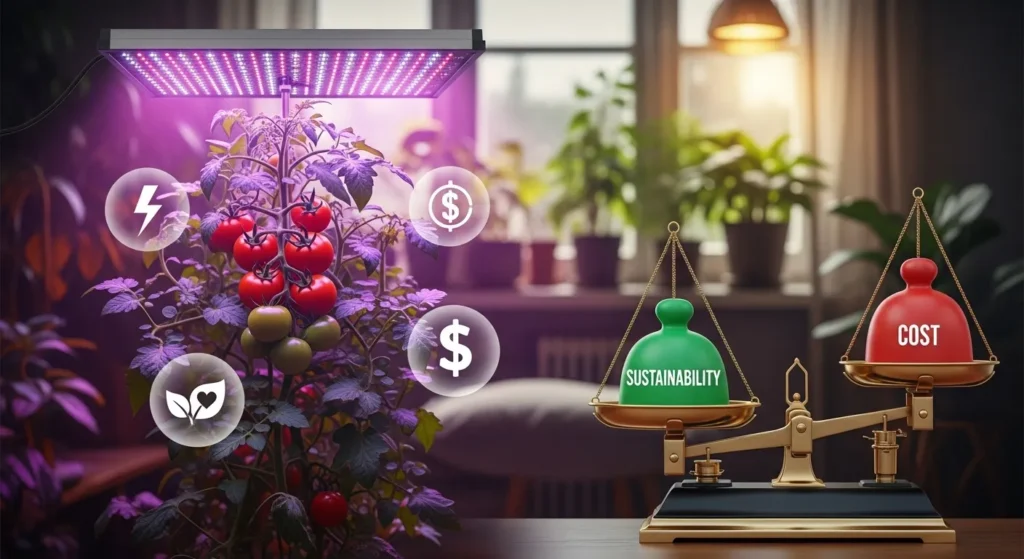
- Cost vs. Accessibility – Not everyone can afford LED grow lights or hydroponic kits.
- Sustainability of Mediums – Coco coir is renewable, but perlite and vermiculite require mining.
- Energy Use – Indoor growing with lights increases electricity consumption.
The key is balance. Even a small-scale setup reduces food miles and encourages self-sufficiency.
Future Outlook
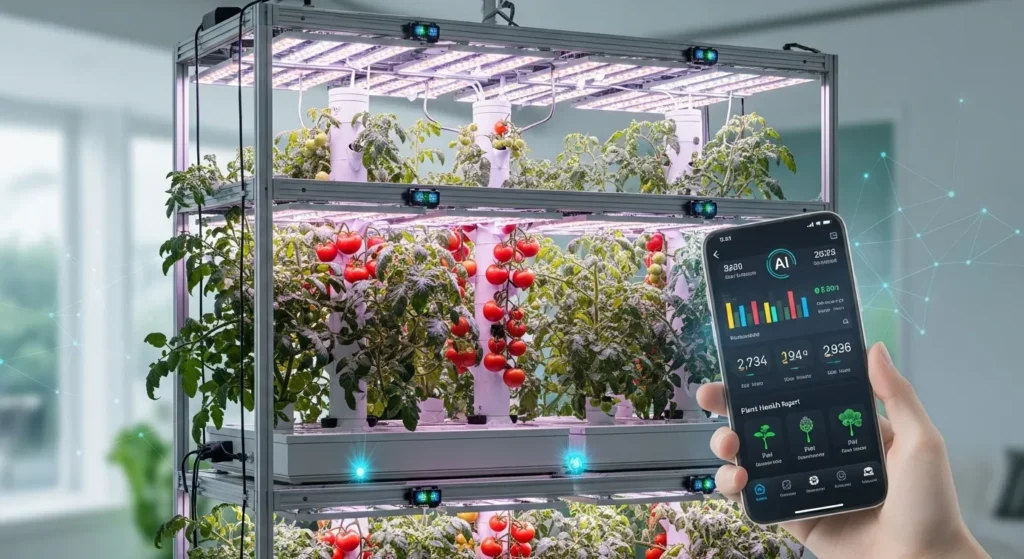
- Smart Hydroponics – Imagine AI apps monitoring pH, nutrients, and water levels for you.
- Affordable DIY Kits – Prices are dropping, making it accessible to everyone.
- Organic Soil-Free Solutions – More gardeners are demanding organic-approved nutrient mixes.
In the next decade, it’s possible that most urban homes will have a mini soil-free garden—just like we have microwaves and refrigerators today.
👉 “For those who enjoy outdoor projects, explore our Raised Bed Gardening Ideas for creative ways to expand your garden space.”
FAQ
Q1: Can you really grow tomatoes in pots without soil?
Yes! By using coco coir, perlite, or hydroponic systems, you can grow tomatoes successfully without traditional soil.
Q2: What is the best growing medium for soil-free tomatoes?
Coco coir mixed with perlite (70/30 ratio) works best. It retains moisture, improves drainage, and supports healthy root growth.
Q3: Do tomatoes grow faster without soil?
Yes, hydroponic and soil-free tomatoes often grow faster and yield more because they receive nutrients directly in water solutions.
Q4: How much light do tomatoes need in soil-free pots?
Tomatoes require 10–12 hours of sunlight daily. Indoors, LED grow lights can provide consistent light year-round.
Q5: Is growing tomatoes without soil eco-friendly?
Yes. Hydroponic systems use up to 90% less water compared to soil gardening, making it sustainable for urban and indoor growers.
Conclusion
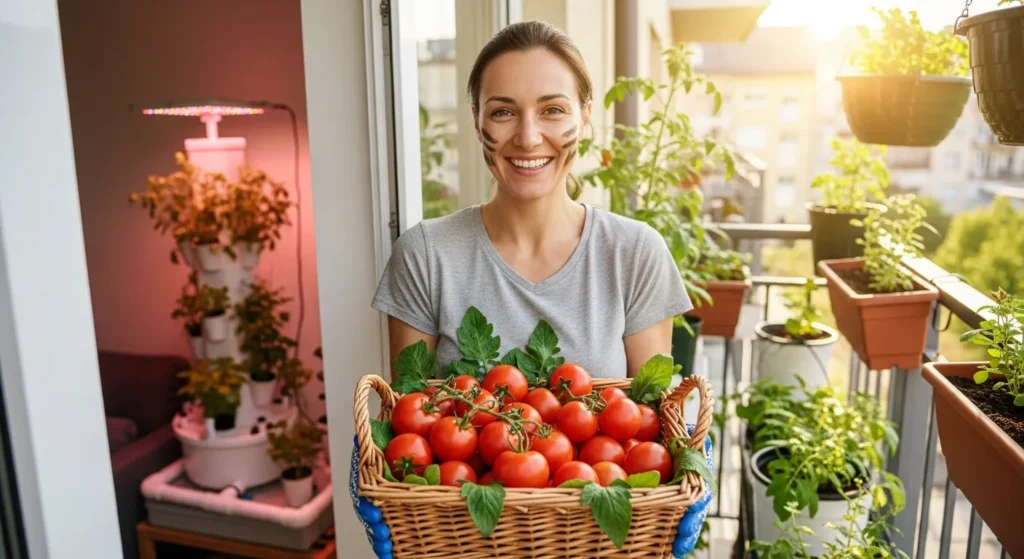
Growing tomatoes without soil isn’t just a gardening trend—it’s a lifestyle shift. With the right pot, medium, and care, you can enjoy fresh, chemical-free tomatoes from your balcony, kitchen, or living room.
👉 “And if you still prefer traditional gardening, check out our guide on the Best Soil for Raised Beds to improve your outdoor harvests.”
So why wait? Start small. Get a pot, some coco coir, and a few seeds. Watch your plants grow, learn from the process, and savor your first harvest.
Because nothing beats the taste of a tomato you grew yourself—no backyard required.

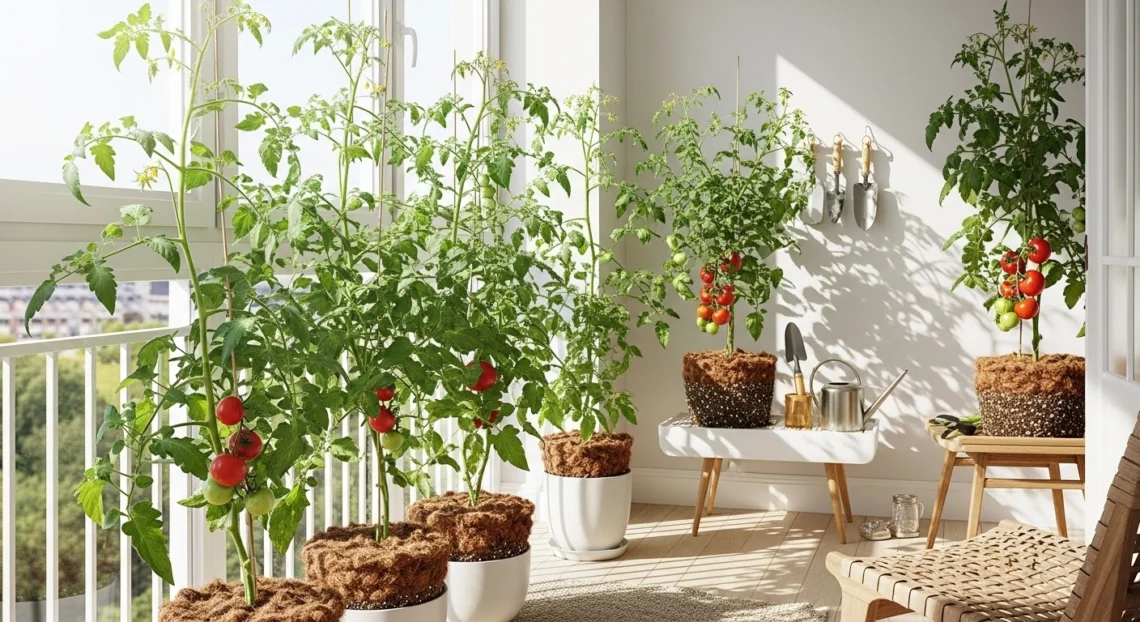
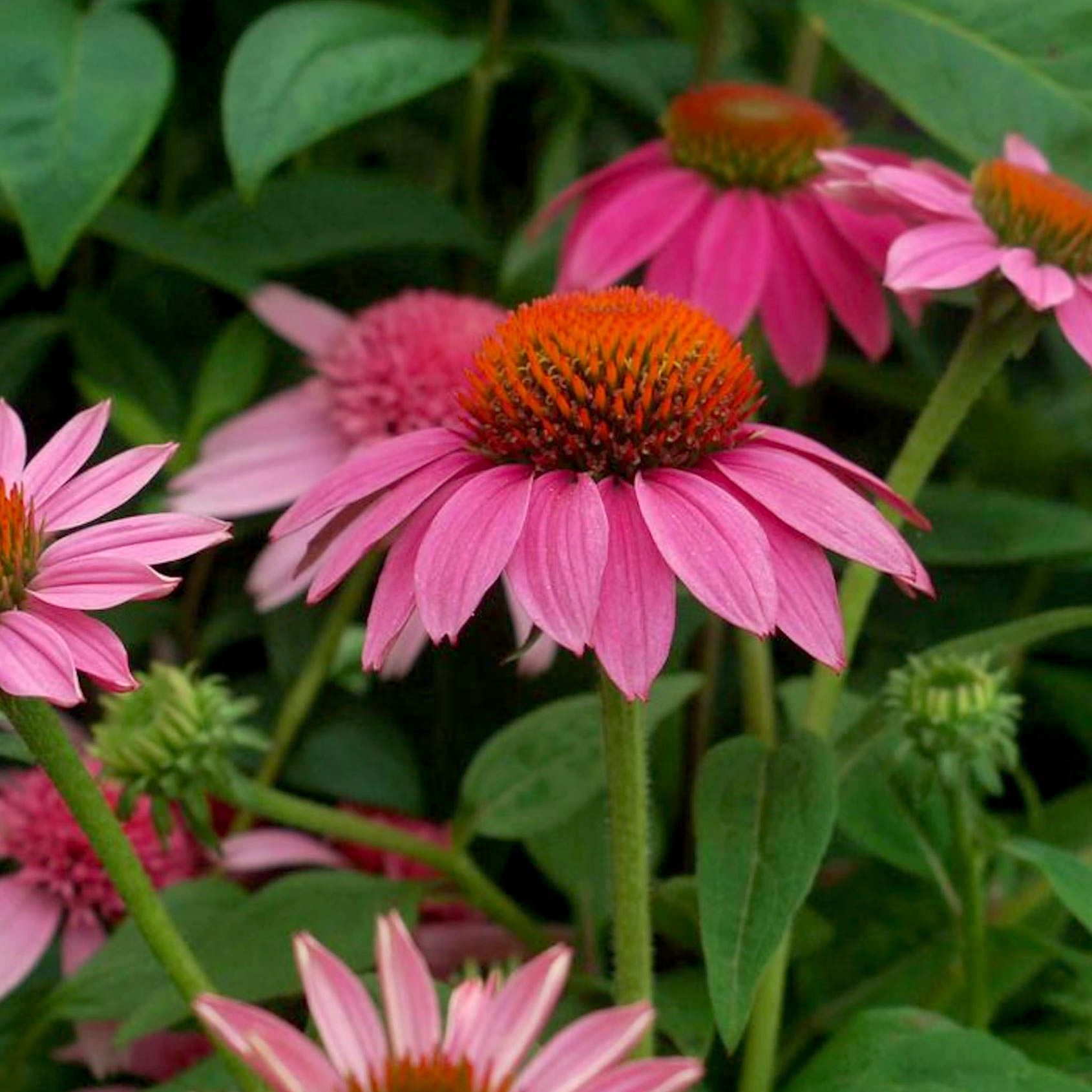


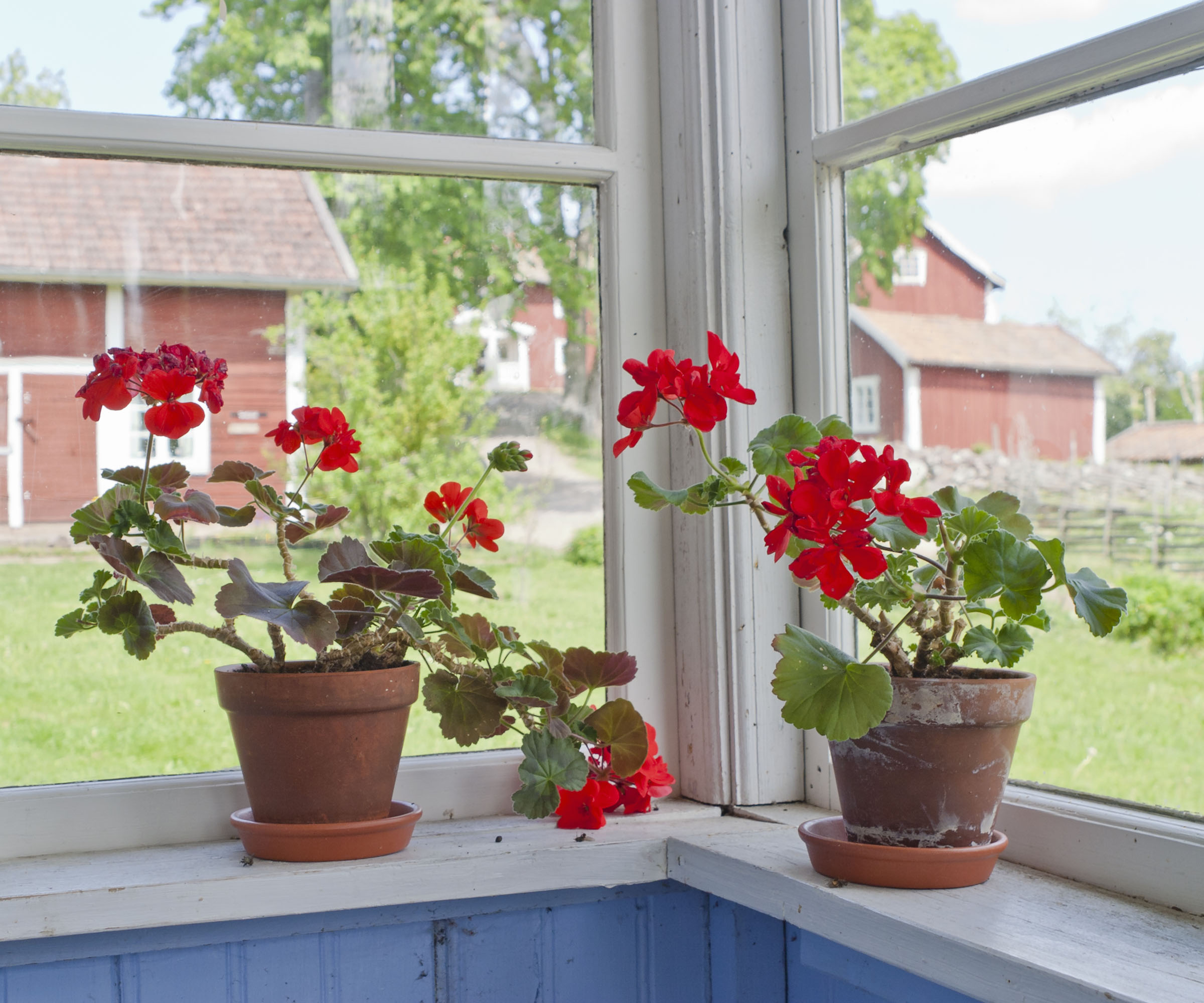
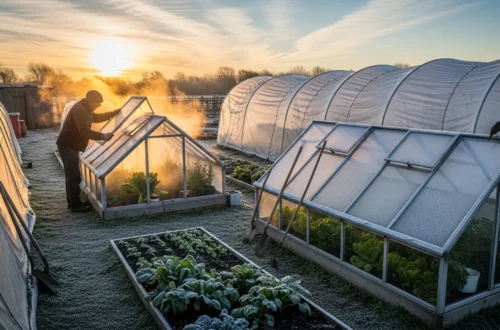
2 Comments on “How to Grow Tomatoes in Pots Without Soil (Step-by-Step Guide)”